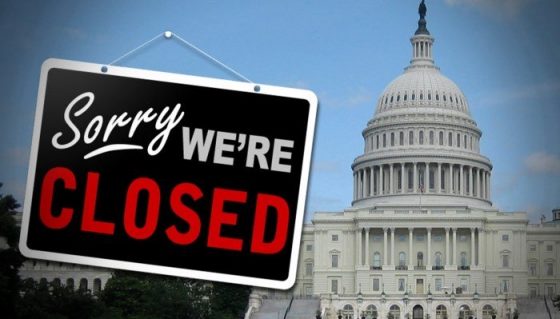Shut Down for What?

A few weeks ago, the federal government was shut down for two days as Senators and Congressmen struggled to reach an agreement on the government’s budget. It was the first shutdown since 2013 when Republicans shut down the government for 16 days to protest Obamacare. This time, it was the Democrats’ turn to vote to trigger the shutdown, but how does something like the U.S. Government “shut down?” Who’s really to blame—Democrats or Trump/Republicans? And why did the shutdown end so quickly compared to previous impasses?
The seed of the January shutdown was planted in September 2017, when President Trump announced that he would end the Deferred Action for Childhood Arrivals program, which allows illegal immigrants brought to the U.S. as children to gain legal status. Although they aren’t technically citizens, the nearly 700,000 “Dreamers” are able to live and work in the U.S. without the threat of deportation. Trump gave Congress until March 2018 to come up with a solution, or else he would scrap the program entirely. Since this announcement, Democrats have been demanding that Congress discuss possible solutions, including the DREAM Act, which would provide a path to citizenship for Dreamers.
Despite the hard deadline, Republican leaders were unwilling to seriously address the issue. Trump and Congressional leaders did not agree to formal bipartisan talks on immigration until January and only did so after it became clear that Democrats and some Republicans would not support a budget deal until they did.
This is how government funding works: the government’s “fiscal year” begins in October. Typically in the fall, Congress will pass a budget for the following fiscal year to determine what exactly the government will be spending it’s (or rather, our) money on. This year, however, the Republicans failed to do so, instead opting to push through tax reform. Instead of a long-term budget, the government has instead been operating on what are referred to as “continuing resolutions,” which essentially fund the government for a few weeks or a month at a time at current levels. The problem for Republican leaders came when supporters of DACA realized that if they didn’t vote for these continuing resolutions, they would have ample leverage to demand a solution. After a large and growing number of Democrats voted against the December continuing resolution, Republican leaders were forced to enter into negotiations.
Once bipartisan talks finally got underway in January, things started to get interesting. In a meeting with leaders of both parties to discuss immigration, Trump made his famous “shitholes” remark, sparking the backlash from nearly everyone in Washington—and the world for that matter. Despite the gaffe, the talks were not fruitless. Underreported was the fact that Trump actually did reach a bipartisan deal with Senate Democrats that would have easily passed both houses of Congress. The deal called for $10 billion in funding for a border wall, limited so-called “chain migration,” and provided a path to citizenship for Dreamers, among other things. Trump also signified he may be willing to attempt a more comprehensive immigration reform package in the future. This deal was embraced by a bipartisan group of Senators.
But by the time the bipartisan group was ready to put the deal on the floor of the Senate, Republican leaders including Trump rejected it out of hand and refused to allow any formal debate on the matter. They then demanded that the bipartisan group fall in line and vote for yet another continuing resolution that did not include a DACA fix. The vote failed, and the government shut down.
Although it’s easy to blame Democrats for the shutdown, as you can see, the details complicate things. Yes, most of the people who voted to shut down the government were Democrats, but not all were, and if Trump and Republican leaders in Congress had simply accepted the deal Trump had already agreed to, then the shutdown would have never occurred. Instead, Republican leaders chose to continue their Obama-years strategy: Obstruct, and hope the Democrats blink first. The Democrats did eventually cave, despite most of the public recognizing that Republicans were mostly to blame, and a supermajority of Americans supporting a path to citizenship for Dreamers.
In some ways, the shutdown exposed the flaws of both parties’ leadership—the Republicans’ inability to govern responsibly, and the Democrats’ inability to play hardball without rolling over when things get tough. If the Republicans want to have any chance at all in the midterms, they need to fundamentally rethink their priorities governing responsibly as opposed to scoring partisan points and appeasing their donors. Likewise, the Democrats need to pull themselves together, unite around a popular, progressive agenda that benefits working Americans, and refuse to back down from their positions unless Republicans are willing to do the same. Neither of these things will happen anytime soon, meaning that another shutdown is likely, while a DACA fix is not.
Your donation will support the student journalists of Saint Louis University.




